Mission type ISS assembly/logistics SATCAT no. 26747 Apogee 375,000 m Dates 19 Apr 2001 – 1 May 2001 | COSPAR ID 2001-016A Period 1.5 hours Launch date 19 April 2001 Landing date 1 May 2001 | |
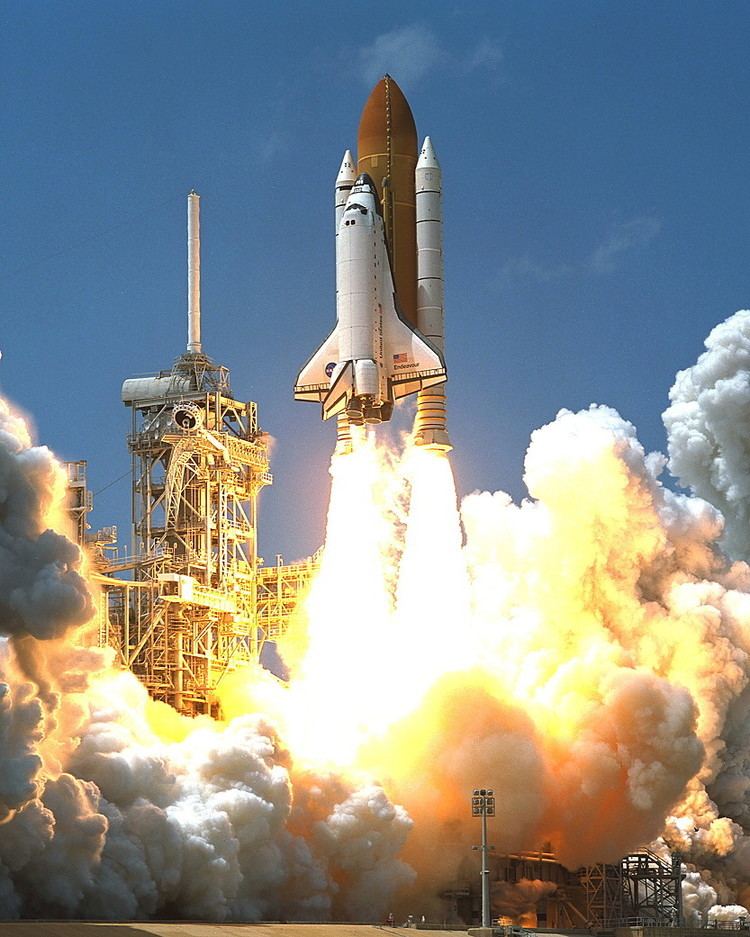 | ||
Mission duration 11 days, 21 hours, 31 minutes, 14 seconds Launch mass 103,506 kilograms (228,192 lb) Members Kent Rominger, Jeffrey Ashby, Chris Hadfield, John L. Phillips, Scott E. Parazynski, Umberto Guidoni, Yury Lonchakov | ||
STS-100 was a Space Shuttle mission to the International Space Station (ISS) flown by Space Shuttle Endeavour. STS-100 installed the ISS Canadarm2 robotic arm.
Contents
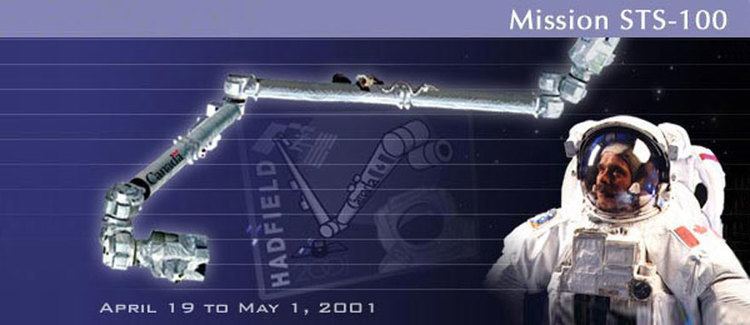
Sts 100 launch 4 19 01
Mission highlights
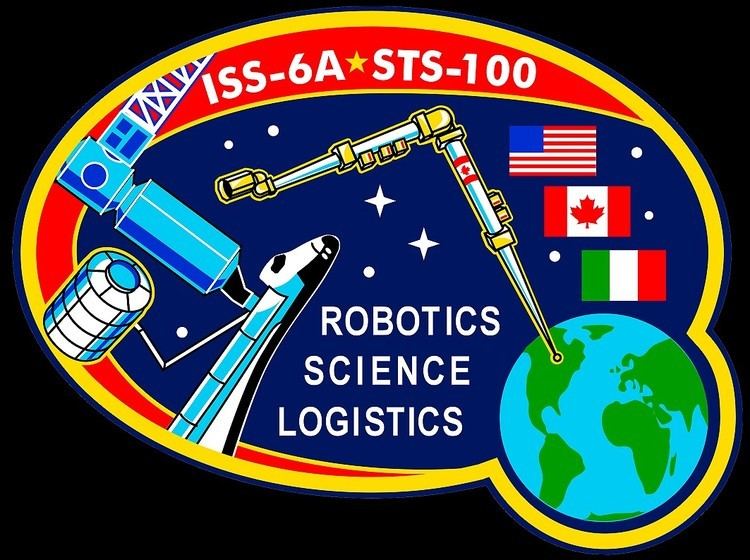
The highest priority objectives of the flight were the installation, activation and checkout of the Canadarm2 robotic arm on the station. The arm, which went into operation on April 28, 2001, was critical to the capability to continue assembly of the International Space Station. The arm was also necessary to attach a new airlock to the station on the subsequent shuttle flight, mission STS-104. A final component of the Canadarm is the Mobile Base System (MBS), installed on board the station during the STS-111 flight.
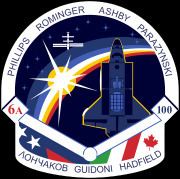
Other major objectives for Endeavour’s mission were to berth the Raffaello logistics module to the station, activate it, transfer cargo between Raffaello and the station, and reberth Raffaello in the shuttle's payload bay. Raffaello is the second of three Italian Space Agency-developed Multi-Purpose Logistics Module that were launched to the station. The Leonardo module was launched and returned on the previous shuttle flight, STS-102, in March.
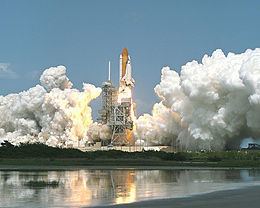
Remaining objectives included the transfer of other equipment to the station such as an Ultra-High Frequency communications antenna and a spare electronics component to be attached to the exterior during space walks. Finally, the transfer of supplies and water for use aboard the station, the transfer of experiments and experiment racks to the complex, and the transfer of items for return to Earth from the station to the shuttle were among the objectives.
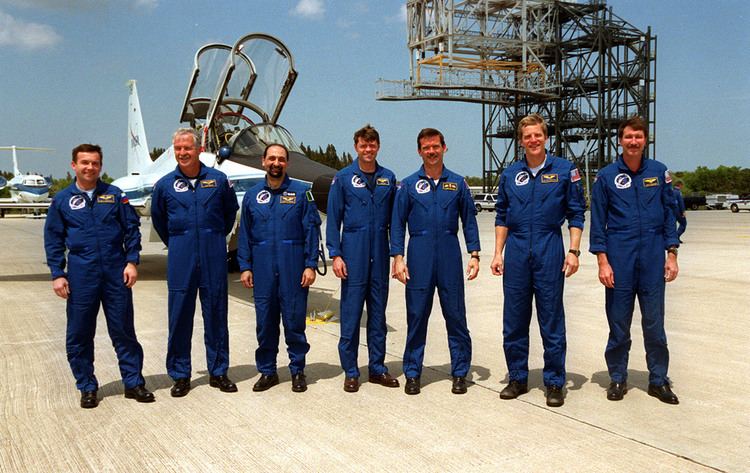
Endeavour also boosted the station's altitude and performed a flyaround survey of the complex, including recording views of the station with an IMAX cargo bay camera.
All objectives were completed without incident, and reentry and landing happened uneventfully on 1 May 2001.
During this mission, astronaut Chris Hadfield made the first spacewalk by a Canadian.
Wake-up calls
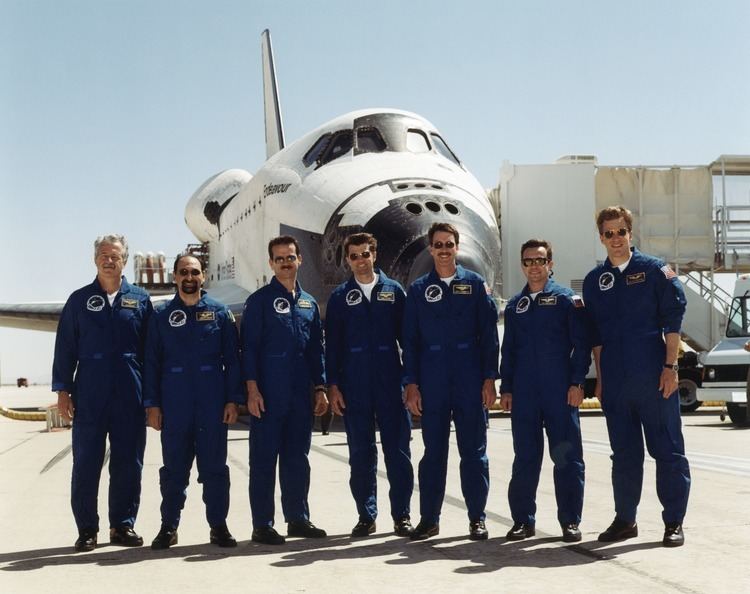
NASA began a tradition of playing music to astronauts during the Gemini program, which was first used to wake up a flight crew during Apollo 15. Each track is specially chosen, often by their families, and usually has a special meaning to an individual member of the crew, or is applicable to their daily activities.
